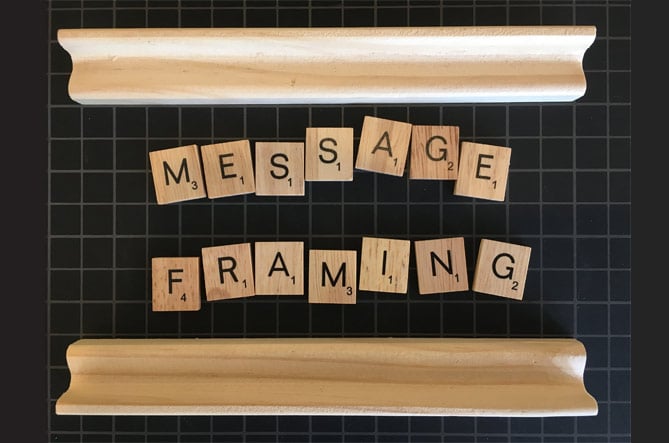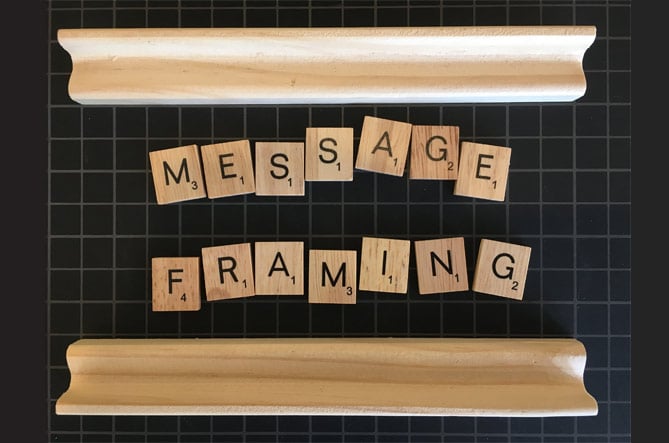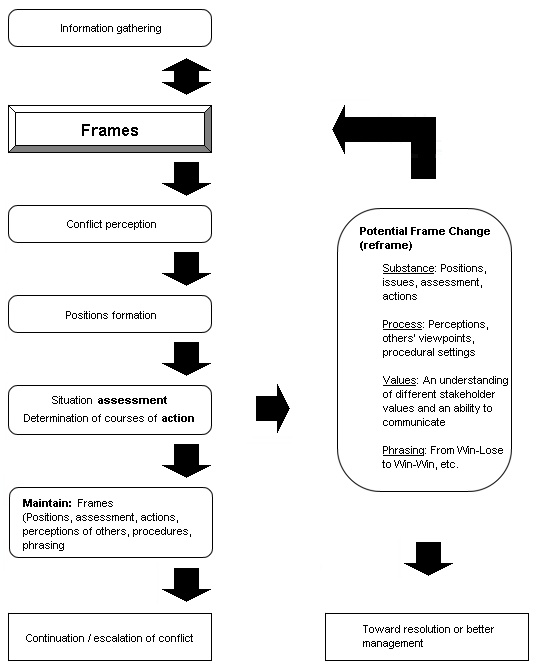How to Use Your Core Values to Inspire, Retain, and Energize Your Team
For the last few decades, but especially so in recent years, people are seeking out more than just an income from their place of employment. More...


The strategy of framing messages for change has never seemed more important — or more difficult. Never more important because pressing issues like suicides, random acts of violence, air and water pollution, extreme weather events, and opioid addiction are surging and seemingly intractable. Never more difficult because sharing the stories of the individuals affected has never been easier — but stories of an individual’s problem hide systemic approaches and solutions. Never more difficult because inadvertently triggering a counterproductive mental frame associated with one ‘side’ or the other of a polarized debate has never been easier.
Wondering if you can successfully frame a change message today? Let's look at how (and why) to rise to the challenge.
Framing is what you choose to say and how you choose to say it. It is also what you choose not to say. Framing a message focuses attention — just as presenting a picture in a red frame versus a black frame focuses our attention and changes how we see the picture. Framing influences people’s attitudes and opinions about your message.
Think of message frames as shortcuts to mental models, with an added emotional component.
Frames are used everywhere, whether we are conscious of it or not. What comes to your mind when you hear: Welfare queen, death panels, the safety net, nature vs. nurture, global economy, chain migration, climate change, the achievement gap, the invisible hand of the market, the cradle-to-prison pipeline, evidence-based medicine, clean coal—likely represents far more than each short phrase itself. Such 'hot' frames are polarizing discussions and limiting a collaborative search for solutions.
Framing, or ‘reframing’ an issue, can shift how people understand and respond to the change issues you care about. A growing body of research in psychology, communication, conflict resolution, and decision-making indicates that because frames filter people's perception of an issue or problem, changing the frame changes the response.
Reframing for Conflict Resolution

Source: Beyond Intractability
People are more open to information if it’s framed in a way that resonates with how they see the world, their values, and their identities. That’s why research about your audience, their values, and identities, is step number one.
Combining your audience research and the latest thinking on brain science and human behavior leads to a four-part formula for message framing to create an effective social change message:
Effective frames use a variety of tools to help people see why they care, and to document and describe the problem and solution:
Each conceptual frame can use multiple tools. Remember that works best will depend on your audience, so if possible, test alternative frames.
Yes, framing messages for change has never seemed more important — or more difficult. But with careful attention to your audience's existing, limiting mental frames, and a commitment to help them consider new conceptual frames and questions, I firmly believe we can unlock new solutions.
What is the sum of 5 plus 5?”
“What two numbers add up to 10?”
The first question has only one right answer, and the second question has an infinite number of solutions, including negative numbers and fractions. These two problems, which rely on simple addition, differ only in the way they are framed.
--- InGenius by Tina Seelig
How Reframing A Problem Unlocks Innovation, Fast Company
Reframing America’s Opioid Epidemic to Find Solutions, Stanford Social Innovation Review
Frames, Framing and Reframing. Knowledge Base and Conflict Fundamentals, Beyond Intractability
The Moral Roots of Environmental Attitudes, Journal of Psychological Science
How words change minds: The science of storytelling | Nat Kendall-Taylor [VIDEO]
Red, white, and blue enough to be green: Effects of moral framing on climate change attitudes and conservation behaviors. Journal of Experimental Social Psychology
InGenius, by Tina Seelig
The Change Conversations blog is where changemakers find inspiration and insights on the power of mission-driven communication to create the change you want to see.
© 2009- to present, Marketing Partners, Inc. Content on the Change Conversations blog is licensed under a Creative Commons Attribution-Noncommercial-NoDerivs 3.0 United States License to share as much as you like. Please attribute to Change Conversations and link to ChangeConversations.
Creative Commons License may not apply to images used within posts and pages on this website. See hover-over or links for attribution associated with each image and licensing information.

For the last few decades, but especially so in recent years, people are seeking out more than just an income from their place of employment. More...

You know nonprofit organizations need websites just as small businesses do, but you may be surprised to learn nonprofit sites can be more complex and...

In today’s rapidly evolving media landscape, understanding where and how your story is told isn’t just strategic—it’s essential. How you communicate...